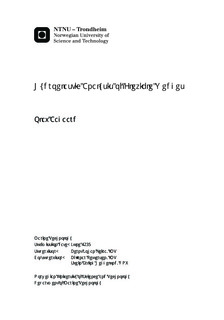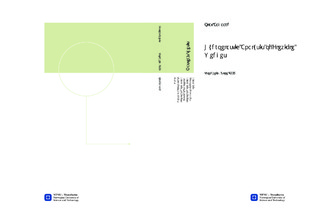| dc.contributor.advisor | Leira, Bernt Johan | nb_NO |
| dc.contributor.advisor | Pettersen, Bjørnar | nb_NO |
| dc.contributor.advisor | Heggelund, Svein Erling | nb_NO |
| dc.contributor.author | Aagaard, Olav | nb_NO |
| dc.date.accessioned | 2014-12-19T12:09:57Z | |
| dc.date.available | 2014-12-19T12:09:57Z | |
| dc.date.created | 2013-09-19 | nb_NO |
| dc.date.issued | 2013 | nb_NO |
| dc.identifier | 649589 | nb_NO |
| dc.identifier | ntnudaim:9096 | nb_NO |
| dc.identifier.uri | http://hdl.handle.net/11250/238606 | |
| dc.description.abstract | This thesis presents a simulation method for analyzing the coupled water entry problem of elastic bodies. The water entry problem is investigated using the software STAR CCM+ for computational fluid dynamics and Abaqus for finite element analysis.Relevant literature on theory and numerical methods on water impact and fluid-structure interactions has been reviewed.A model has been created in STAR CCM+ to analyze the water entry of rigid wedges. Convergence tests have been performed with respect to relevant parameters, and the method is verified through comparison with previous work. The agreement is good. The effect of viscosity and compressibility is investigated.A model has been created in Abaqus to analyze the structural response of the water impact. Convergence test with respect to relevant parameters has been conducted, and the method is verified through comparison to theory. The agreement is very good.A co-simulation model with STAR CCM+ and Abaqus has been created. The hydroelastic water entry of deformable wedges is analyzed. The problem is analyzed with one-way coupling and two-way coupling. One-way coupling means that hydrodynamic pressures are exported to the structural model, and two-way coupling means that structural deformations are exported to the hydrodynamic model as well. Different coupling schemes are investigated, and numerical parameters governing the nature of the coupling are assessed.Results from the coupled numerical model have been compared to experimental data. The agreement is poor, due to failure in properly recreating the experimental environment in the numerical model. Recommendations for experimental verification of the model are presented. A parameter study has been conducted with respect to the elasticity for the wedge impact, and the effect of structural nonlinearity has been assessed. It is found that the coupled solution for the structural response of a low-stiffness wedge exceeds the quasi-static response to an equivalent pressure.Recommendations on further work with FSI-simulations on the water entry problem are presented. | nb_NO |
| dc.language | eng | nb_NO |
| dc.publisher | Institutt for marin teknikk | nb_NO |
| dc.title | Hydroelastic Analysis of Flexible Wedges | nb_NO |
| dc.type | Master thesis | nb_NO |
| dc.source.pagenumber | 131 | nb_NO |
| dc.contributor.department | Norges teknisk-naturvitenskapelige universitet, Fakultet for ingeniørvitenskap og teknologi, Institutt for marin teknikk | nb_NO |

